
Wealthy families do not worry about whether walking to school involves crossing a gang boundary.
In This Lesson
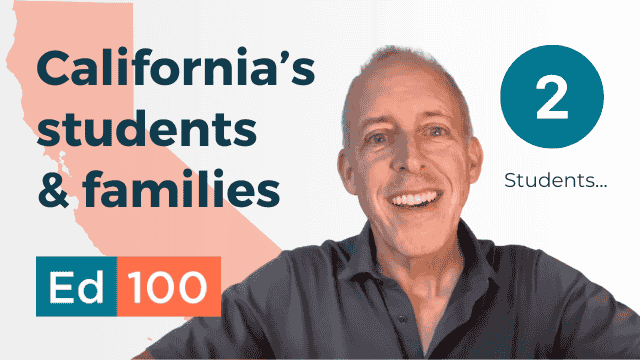
What is it like to be poor?
How are poverty and education related?
How is poverty measured?
Who gets a free school lunch?
How does race affect test scores?
What is the definition of poverty?
How does poverty affect learning?
▶ Watch the video summary
★ Discussion Guide.
They have shelter and food. They have a car, or other convenient transportation that makes it possible to consider choosing a school on the basis of criteria other than proximity. Health care when they need it. If a crisis hits, they have savings to fall back on – or at least access to credit on reasonable terms.
If you haven't lived in poverty, it is hard to imagine it.
This lesson examines the connections between student learning and human needs. Poverty and race are deeply entwined in America, so this lesson examines them together.
How are poverty and education related?
Poverty correlates strongly with academic results. Schools with low test scores, on the other hand, almost always have a lot of families living in poverty. Schools where families have a comfortable income always have good scores. This correlation is very stable. For example, the chart below shows scores on the Nation's Report Card (NAEP), highlighting districts in Massachusetts and California. It's an old chart, but the point it makes remains unchanged. (If you are a New York Times subscriber, look here for a more sophisticated presentation.)
Here's how to read the chart: The white dots are school districts in California. The red ones are Massachusetts. Dots on the left represent districts with more poverty, and those on the right represent more affluence. On this chart, "up" is good — test scores are higher. Students at every economic level tend to do better in Massachusetts than in California… but it makes an even bigger difference to be affluent.
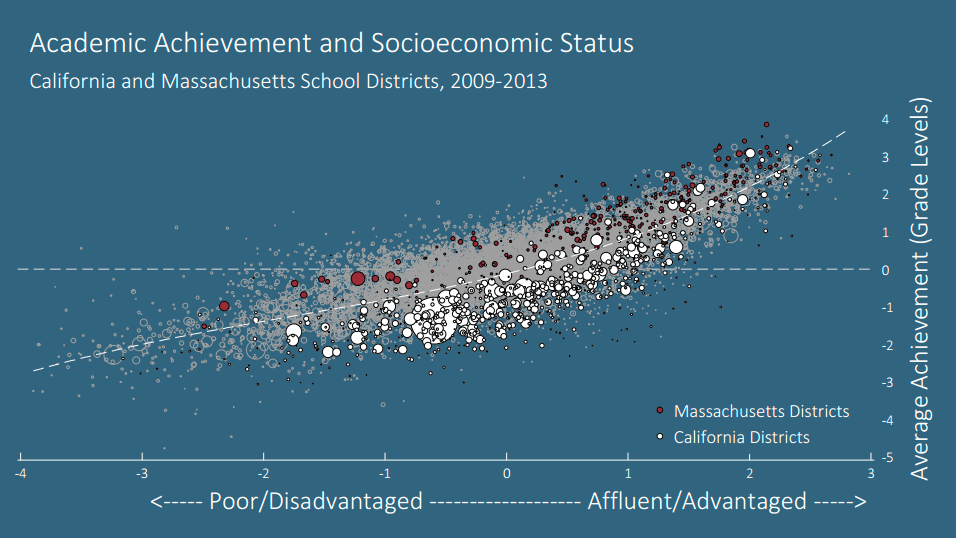 Schools where many students qualify for free or reduced-price lunch ('FRPL' in eduspeak) tend to have lower scores than those where families are wealthier. Across the wealth spectrum, scores in California districts lag substantially behind those in Massachusetts. (Chart: Sean F. Reardon from 'The Landscape of US Educational Inequality')
Schools where many students qualify for free or reduced-price lunch ('FRPL' in eduspeak) tend to have lower scores than those where families are wealthier. Across the wealth spectrum, scores in California districts lag substantially behind those in Massachusetts. (Chart: Sean F. Reardon from 'The Landscape of US Educational Inequality')
The connection between economic well-being and education results is one of the most enduring relationships in all of education research. It shows up everywhere. For example, there are predictable gaps in the scores of the ACT tests that many students take as part of the college application process. In a 2015 chart from a multi-year study, ACT identified a set of benchmarks to compare how well students are prepared for college and career. While 42% of students from families with annual incomes above $100,000 met all four ACT College Readiness Benchmarks, only 13% of low income students (under $36,000) did. A 2023 study by researchers from Harvard and Brown Universities found similar patterns.
Is the correlation between wealth and educational achievement an artifact of the design of the ACT tests? No, it shows up everywhere. For example, in 2021 the gap appeared, as usual, in the results of California's annual standardized test, the California Assessment of Student Performance and Progress (CAASPP). About 36% of students from low-income families met or exceeded grade-level standards in English Language Arts/Literacy. For students not in low-income families, the ratio was flipped — about 2/3 met grade-level standards in English Language Arts/Literacy, and half met or exceeded grade-level standards in mathematics.
The connection between money and test performance is strongest at the extremes. For example, about a third of students from non-poor families scored in the "exceeded standards" range. But only about one in ten students from a low-income family did so.
The National Center for Education Statistics (NCES) studied a group of tenth-grade students from families that differed in family income or socioeconomic status (SES) over a ten-year span. The results are summarized in this video:
For a long time, poverty statistics depended on lunch
For decades, many poverty statistics in education relied on a crude definition: whether a student's family filed to qualify for the free lunch program. This was a useful distinction, but sloppy. For one thing, subsidized meals were available for families far above the definition of poverty. For another, the measure was binary: families either qualified or didn't. This left room for big differences. It's like calling both Tom Cruise and Kevin Hart "short." Sure, neither should be cast as a star player in a movie about basketball, but they don't equally miss the mark, right?
During the pandemic, school lunch service in California was made free for all students, and as of 2025 it seems likely to stay that way, despite executive orders from the Trump Administration to cut the funding. Before access to school lunch became universal, about half of California families filed paperwork to qualify for it. It was a costly, bureaucratic hassle, and many families experienced a sense of shame about it.
Regardless of whether California is able to sustain its universal school meals program, the state probably should switch to a better definition of economic differences among students. In 2024, researchers suggested that eligibility for SNAP (Supplemental Nutrition Assistance Program, once known as food stamps) would be a more reliable and meaningful measure.
Some groups of students tend to do better in school than others. The patterns, known as achievement gaps, are the subject of Lesson 9.6. Gaps associated with poverty and ethnicity are strongly correlated. African American and Hispanic/Latino students are much more likely to be poor, and their parents often have completed less education than those of white and Asian students. These gaps contribute to lasting differences in family wealth. For example, Black boys in almost all neighborhoods earn less in adulthood than white boys growing up in families with comparable income.
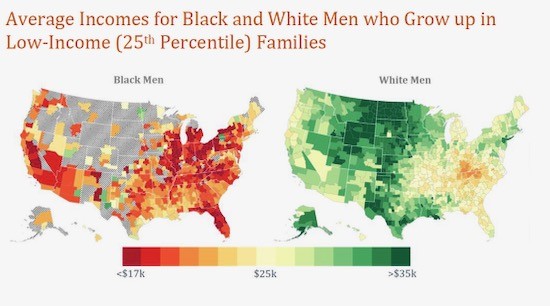
Poverty in California is worse than average
Poverty hurts kids. Families living on the edge find it harder to provide their kids with healthy and productive places to focus on learning. The challenges of poverty are noticeable everywhere, but they are particularly stark in California. The chart below compares poverty levels by state just prior to the COVID-19 pandemic. (During the pandemic, federal aid temporarily mitigated poverty in California.)
Achievement gaps part 1: Race
Race correlates with test scores and other outcome measures, like high school or college completion. The effects are connected with income, especially poverty, but also somewhat separate. For example, in a 2015 study of the SAT scores of more than a million students attending the University of California, sociologist Saul Geiser found a strong pattern:
“…race has become the strongest predictor of students’ SAT scores. Rather than declining in salience, race and ethnicity are now more important than either family income or parental education in accounting for test score differences.”
Scholars including Harvard’s Ronald Ferguson and Stanford’s Linda Darling-Hammond have tackled the complex issues of race in education. Some of the most frequently cited sources of patterns in the educational achievement of groups include hidden underinvestment; variances in family social capital; persistent cultural effects; and various effects of racism including race-based differences in expectations.
GreatSchools.org collects data about schools, examining student demographics and outcomes including test results. In a 2017 report, Searching for Opportunity: Examining Racial Gaps in Access to Quality Schools in California, the organization focused attention on schools with a record of success for African-American and Latino students. There aren't many. The introduction to the report expresses the gap plainly:
"Only 2% of African American students and 6% of Hispanic students attend a high performing and high opportunity school for their student group, compared with 59% of white and 73% of Asian students."
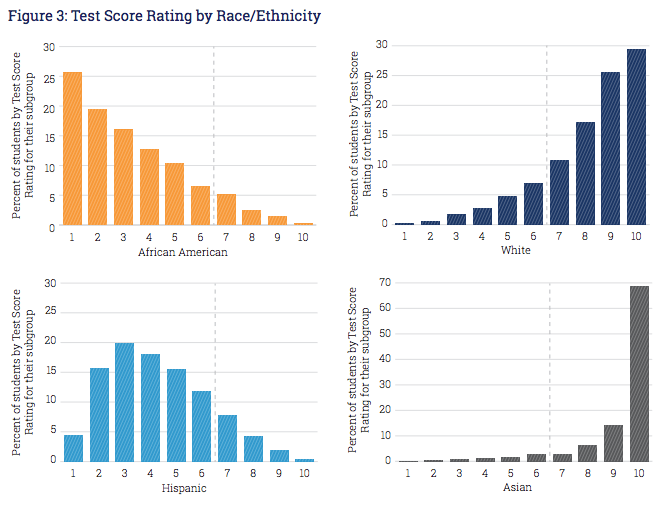
The GreatSchools report shows that few Latino and African American students attend schools where students like them score well. Conversely, few Asian or white students attend schools where students like them score poorly. Few, however, is not the same as none. The report goes on to identify 156 high-performing "spotlight schools" where African-American and Latino students have a pattern of high scores. These schools, half of them with relatively high poverty, show what's possible.
Achievement gaps part 2: Poverty
John Scalzi, author and social commentator, has suggested a provocative analogy to support discussion about the roles of race, gender, class and sexual orientation in education and life. He imagines life as a video game in which the difficulty setting is determined by your demographics. "In the role playing game known as The Real World," Scalzi proposes, "'Straight White Male' is the lowest difficulty setting there is... the 'Gay Minority Female' setting? Hardcore."
The following video examines different educational and life outcomes of two children born into different neighborhoods.
Beyond the USA, major research programs tend to disregard race as a factor in analysis of school outcomes. For example, PISA, the main education research arm of the OECD, releases results only based on relative income in each country it studies. The US is very different from most nations in the OECD analysis, with most scores at the bottom of the range, but a long, thin tail of high scores at the top.
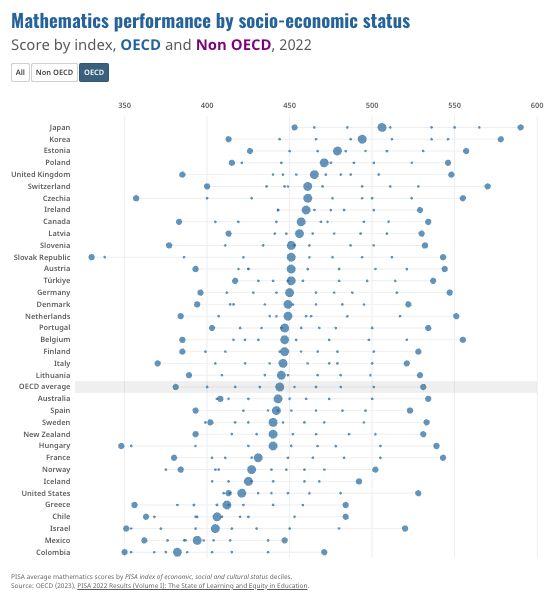
Definitions of povery matter
Researchers define poverty in different ways, and states have some influence over the definitions. For example, is a family counted as poor if it falls below a certain income level, or must it remain below that level for an entire year? What if it falls only a tiny bit below or above the line?
Poverty is more than a lack of money. Economics professor Sendhil Mullainathan has amassed evidence that scarcity itself taxes the mind. It's not just that bad decisions make people poor, this work suggests: "Instead, people make bad decisions because they are poor." Poverty creates its own negative feedback loop.
Many theories of change in education seek to identify what combination of factors, in terms of students’ experiences both in and out of school, cause poverty and ethnicity to correlate so strongly with learning. Some of those factors are explored in the next few lessons.
Updated April, 2025
CHAPTER 2:
Students...
-
Students...
Overview of Chapter 2 -
Diversity
The Changing Face of America's Students -
Poverty and Race
How Do Students' Backgrounds Affect Their School Performance? -
Health and Education
What Can Schools Do? -
The Role of Parents
Education and Families -
How Does Education Change
Inputs and Outcomes -
Motivation
What Motivates Students? -
Special Education
Why Not Teach All Kids Alike? -
Child Protection
Intervention and foster care -
Undocumented Students
Education vs. Documentation -
Student Leadership
Student Voice in Schools
Related
-
Educational Failure
The High Social Costs of Bad Apples -
Diversity
The Changing Face of America's Students -
Preschool and Kindergarten
Yes, Early Childhood Education Matters -
Where Are the Good Schools?
Zip Codes and School Quality -
Community Schools
Services Beyond Classwork -
LCFF
The Formula That Controls Most School Funding -
Achievement Gaps
The Education System's Biggest Challenge
Sharing is caring!
Password Reset
Search all lesson and blog content here.
Login with Email
We will send your Login Link to your email
address. Click on the link and you will be
logged into Ed100. No more passwords to
remember!





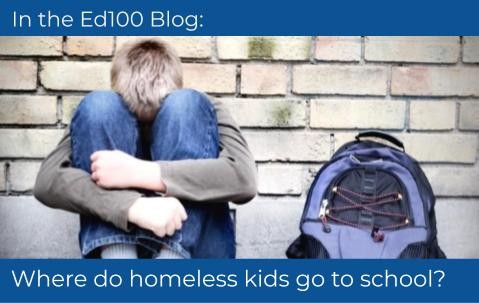









Questions & Comments
To comment or reply, please sign in .
Carol Kocivar November 4, 2025 at 4:55 pm
From the Annie E. Casey Foundation.
Jeff Camp - Founder October 22, 2025 at 12:13 pm
Carol Kocivar April 24, 2025 at 3:11 pm
"A study tracking 814 children over 26 years reveals that access to multiple opportunities, such as after-school activities and high-quality child care, is more predictive of future success than poverty alone. The research published by the American Educational Research Association shows that students from low-income households who have even a few opportunities have significantly better educational and economic outcomes. "
[via the National Association of State Boards of Education, 2025]
Carol Kocivar April 12, 2025 at 7:21 pm
PPIC report
Jeff Camp - Founder March 16, 2025 at 2:15 pm
The Urban Institute does a fantastic job of clarifying and quantifying this distinction in a series of charts that are updated from time to time. The data are national in scope, so in some charts California would be a bit different. Well worth a gander!
Carol Kocivar December 30, 2024 at 1:54 pm
'A study tracking 814 children over 26 years reveals that access to multiple opportunities, such as after-school activities and high-quality child care, is more predictive of future success than poverty alone. The research published by the American Educational Research Association shows that students from low-income households who have even a few opportunities have significantly better educational and economic outcomes. Full Story: The Hechinger Report (9/26) "
https://hechingerreport.org/opportunities-not-poverty-alone-predict-later-life-success-for-children/
Jeff Camp - Founder December 9, 2023 at 12:49 pm
Jeff Camp - Founder November 3, 2023 at 6:11 am
Carol Kocivar January 9, 2023 at 5:00 pm
"We are squandering the talents of too many low-income high achievers"
A comprehensive study, Ohio’s Lost Einsteins: The inequitable outcomes of early high achievers, concludes that more needs to be done on behalf of America’s high achieving kids, especially those from low-income backgrounds. It provides suggestions on what to do.
https://fordhaminstitute.org/national/commentary/we-are-squandering-talents-too-many-low-income-high-achievers
Carol Kocivar January 9, 2023 at 4:28 pm
School poverty – not racial composition – limits educational opportunity, according to new research at Stanford. " Racial segregation remains a major source of educational inequality, but this is because racial segregation almost always concentrates black and Hispanic students in high-poverty schools, according to new research led by Sean Reardon, a professor at Stanford Graduate School of Education (GSE). "https://news.stanford.edu/2019/09/23/new-data-tool-shows-school-poverty-leads-racial-achievement-gap/
Carol Kocivar June 13, 2022 at 7:42 pm
https://ed100.org/blog/to-improve-education-address-poverty
Carol Kocivar June 13, 2022 at 7:37 pm
https://edsource.org/2021/free-school-meals-here-to-stay-in-california/658564
Jeff Camp - Founder June 30, 2021 at 2:23 pm
francisco molina August 13, 2019 at 1:33 am
David Shahal May 22, 2019 at 12:33 pm
Jeff Camp May 27, 2019 at 3:31 pm
Emily Cruz October 29, 2020 at 6:41 pm
Dennis Ashendorf February 22, 2019 at 8:42 pm
Sonya Hendren August 10, 2018 at 11:37 pm
Here's a better way to look at it:
"'Straight White Male' is the lowest difficulty setting there is." Changing a demographic (race, gender, orientation) is analogous to increasing the difficulty setting on a game. YOU, the player, remain the same, but the way the game treats you, changes. Non-player characters respond less favorably, the game isn't dropping free boosts and bonuses everywhere, etc.
The point is that members of different demographics are facing a harder game, not that their characteristics gave them disadvantages.
Alma Cacho May 2, 2018 at 9:34 am
Jacquie March 8, 2018 at 3:25 pm
Evan Molin February 22, 2018 at 5:12 pm
February 22, 2018 at 8:30 am
NATHANIEL CAUTHORN February 22, 2018 at 8:22 am
#giveyearroundschoolachance #playinglifeoneasymode
February 22, 2018 at 8:22 am
Damon Spriggle February 22, 2018 at 8:21 am
February 22, 2018 at 8:21 am
Susannah Baxendale January 11, 2019 at 12:44 pm
Tiyah Malveaux-Phillips February 22, 2018 at 8:20 am
Cassie Kahrer February 22, 2018 at 8:20 am
February 22, 2018 at 8:19 am
Jordan Rohr February 22, 2018 at 8:17 am
Emma Mechelke February 22, 2018 at 8:16 am
VICTOR NGUYEN February 22, 2018 at 8:16 am
AlessandroMiguel Amores February 22, 2018 at 8:16 am
Ethan StLouis February 22, 2018 at 8:15 am
Grace Thomas February 22, 2018 at 8:13 am
Brooklyn February 22, 2018 at 8:11 am
Phillip Brady February 22, 2018 at 8:11 am
Alyssa Stettner February 22, 2018 at 8:11 am
Phillip Brady February 22, 2018 at 8:10 am
Connor Pargman February 22, 2018 at 8:10 am
Olivia Thomas February 22, 2018 at 8:07 am
Hannah Symalla February 22, 2018 at 8:06 am
February 22, 2018 at 8:06 am
Jeff Camp March 7, 2017 at 6:28 pm
Jeff Camp - Founder June 24, 2016 at 10:41 pm
Carol Kocivar June 22, 2016 at 11:04 am
Education Commission of the States takes a look at "The Importance of At-Risk Funding" and reviews the methods each state uses to identify these students.
http://www.ecs.org/ec-content/uploads/The-Importance-of-At-risk-Funding.pdf
tybarra March 23, 2016 at 9:17 am
Jeff Camp - Founder January 11, 2016 at 10:03 am
Pamela Luk November 10, 2015 at 11:35 am
http://thewireless.co.nz/articles/the-pencilsword-on-a-plate
Jeff Camp - Founder October 20, 2015 at 6:10 pm
langle September 5, 2015 at 9:29 am
Jeff Camp - Founder September 6, 2015 at 12:21 pm
Alma Cacho May 2, 2018 at 9:38 am
tonyammarquez April 28, 2015 at 9:13 am
and it continues however I can't say it affected my educational performance.
Jeff Camp - Founder April 22, 2015 at 9:57 am
jenzteam February 27, 2015 at 9:08 am
Brandi Galasso February 9, 2015 at 10:38 am
Jeff Camp - Founder June 20, 2015 at 11:53 pm
Jeff Camp - Founder September 15, 2014 at 9:14 am
Kim Fleming, PhD May 26, 2011 at 9:17 am
A new report, Double Jeopardy: How Third-Grade Reading Skills and Poverty Influence High School Graduation, from the Annie E. Casey Foundation finds that students who don't read proficiently by third grade are four times more likely to leave school without a diploma. For readers who can't master even basic skills by third grade, the rate is six times greater. The longitudinal study of nearly 4,000 students calculates high school graduation rates for children at different reading skill levels and with different poverty rates. Overall, 22 percent of children who have lived in poverty do not graduate from high school, compared to 6 percent of those who have never been poor. This rises to 32 percent for students spending more than half of childhood in poverty. Even among poor children who were proficient readers in third grade, 11 percent still didn't finish high school. That compares to 9 percent of subpar third grade readers who have never been poor. Graduation rates for black and Hispanic students who were not proficient readers in third grade lagged far behind those for white students with the same reading skills. The findings in the report suggest three environments where new policies and programs could foster children's school success: schools; family; and federal, state, and local policy.
See the full report here: http://www.aecf.org/resources/double-jeopardy/
Bruce Fuller March 12, 2011 at 6:25 am
How do local educators understand and learn about family assets, sources of neighborhood cohesion? The Institute of Human Development at Berkeley is digging into this question. See:
On Latino children and schools: http://ewa.org (New Journalism on Latino Children).
On the diversity and strengths of Latino families: Review essay in Developmental Psychology (
http://psychologymatters.org/pubs/journals/releases/dev-46-3-559.pdf )
On school reform organizing in L.A. -
http://educationnext.org/palace-revolt-in-los-angeles/
Bruce Fuller, UC Berkeley